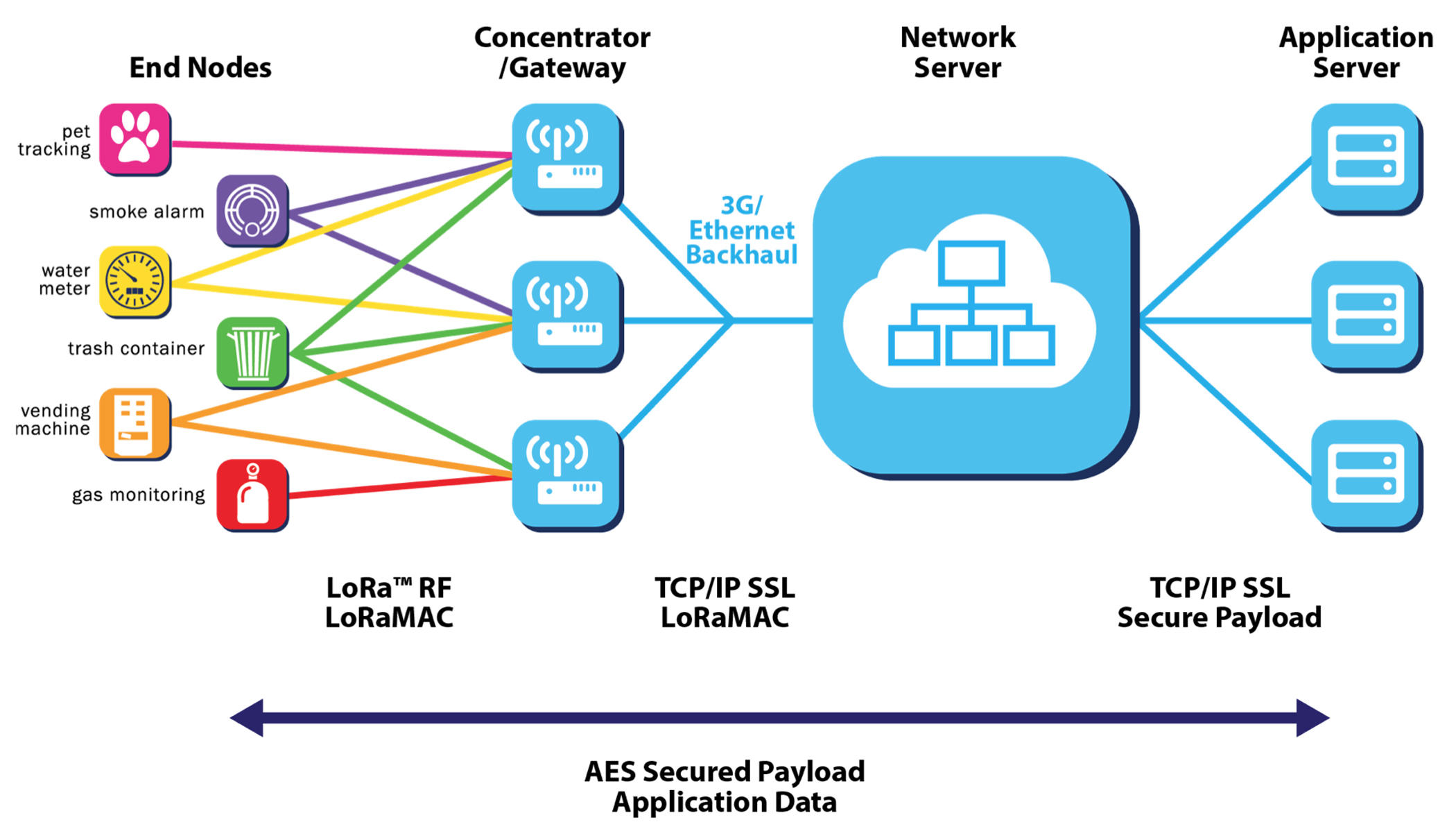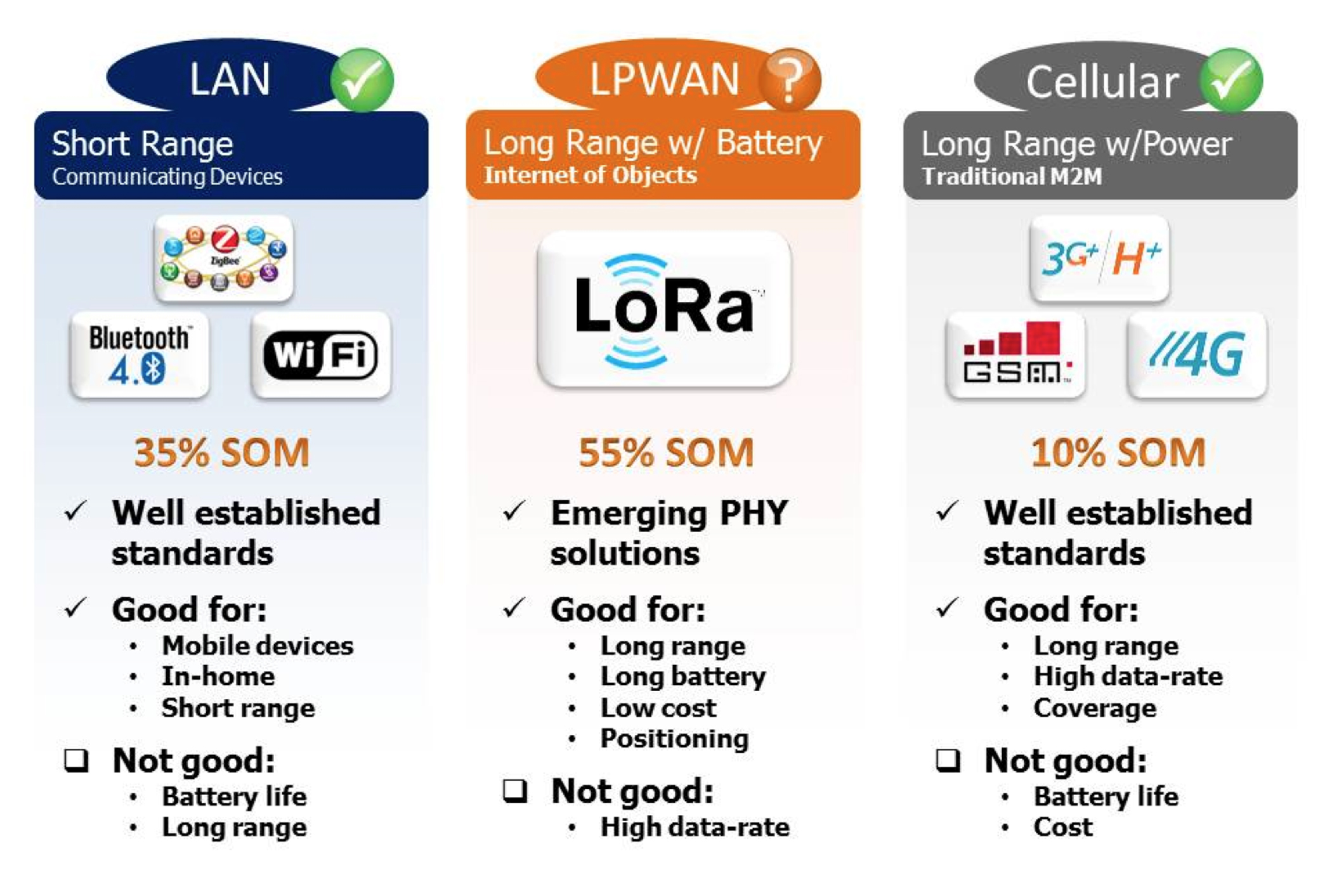Enabling world wide mobility for the IoT
How a long range, low-power spread spectrum technology capable of supporting millions of nodes could enable standardisation in the IoT.
By Hardy Schmidbauer, Semtech.
Many semiconductor and technology companies are basing their future growth on the IoT and while this is a very broad term, there are three main categories of devices: communicating devices, cellular M2M and Internet of Objects (IoO). The volume of connected devices is predicted to be more than 50bn by 2020 and the majority of the volume is predicted to be in the IoO or Low-Power WAN (LPWAN) category.
The technology for communicating devices and traditional M2M is well established and a good solution for the target products, but it does not serve well devices that need long battery lifetime, outdoor connectivity, and low cost operation. The IoO category historically has been highly fragmented without an ideal technology to serve the target applications, therefore limiting the Serviceable Available Market (SAM) of the overall market segment.
Traditionally each application has deployed a private network to serve its needs. For example a smart-meter network is deployed to serve just electric meters; a separate network is deployed for street lighting, etc. Deploying a network for a single application has limited the ROI of many applications, therefore limiting the volume of deployed nodes. The IoO category is quickly shifting to the public-network concept and is the main target of LoRa technology from Semtech. In a public network, a telecomms operator or other party will deploy a network over an entire country or region and offer use of the network to multiple applications for a small monthly or yearly fee. This eliminates significant development cost, eases design and deployment and accelerates time to revenue for the end-application company.

Frequency Shift Keying (FSK) modulation has been used as the modulation of choice over the past 15 years for sub-GHz and 2.4GHz applications due to its low power and low cost implementation. While great for low power, FSK modulation suffers in the total link budget and associated range. Semtech’s LoRa modulation which is integrated along with traditional FSK in its SX127x family utilises the same low power RF architecture as FSK but delivers significantly longer range and better interference immunity than FSK. LoRa is a spread spectrum based technology that has been used for years in different applications, but Semtech is the first to make a low cost implementation that is suitable for battery-operated sensor networks. When using a low cost BOM without an expensive TCXO, LoRa increases the link budget by more than 25dB compared to conventional FSK systems. LoRa is capable of demodulating 20dB below the noise floor and when combined with integrated Forward Error Correction (FEC) it significantly increases the immunity to interference.
Standardising the IoT
With the increased link budget and range capability of LoRa there is no need for a mesh network architecture. A mesh network extends the range of the network but comes at the cost of reduced network capacity, synchronisation overhead, and reduced battery lifetime due to synchronisation and hops. To take full advantage of LoRa properties Semtech designed the gateway chip set and MAC to permit a long range star architecture with capacity to handle tens of thousands of nodes per gateway chip (SX1301). Multiple SX1301 chips can be placed in parallel to create a network with capacity to handle easily hundreds of thousands of nodes communicating to a single gateway over a 15km or greater radius depending on the environment. To take advantage of the spread spectrum orthogonally of different spreading factors, adaptive link rate is designed into the MAC to increase the network capacity, optimise battery life and create a fully scalable system.
Like CDMA technology, using different spreading factors permits simultaneous use of a single channel by multiple different data rates at the same time. Nodes which are close to the gateway and don’t require maximum link budget will use a high data rate to minimise their time on air; only nodes at the limit of the range will use the lowest LoRa data rate and highest output power. The other critical advantage of adaptive link rate is that it creates a scalable system. As the network starts to reach its capacity limits, more gateways can be deployed and the adaptive link will automatically scale the end-node devices to a higher data rate communicating with the nearest gateways and therefore increasing the network capacity. In current systems based on FSK modulation with a single data rate, when the network hits its capacity limit there is nothing that can be done except tear it down and deploy a new architecture.

The LoRa long range star network architecture has a link budget 5-10dB more than cellular systems and mimics existing cellular architecture. This permits use of existing elevated cellular base stations to be equipped with LoRa gateways. With the additional link budget of LoRa, the same coverage can be achieved with the added benefit of in-building and basement coverage. The gateway acts as a pass through or packet forwarded and the network is managed by the network server. Eliminating duplicate packets, scheduling acknowledgement and adapting data rates is managed in the cloud by the network server making it very easy to deploy and manage a LoRa network.
The LoRa protocol (LoRaWAN) has been developed by IoT industry leaders including IBM, Actility, Semtech and Microchip and now transferred to the LoRa Alliance. Its mission is to standardise LPWANs being deployed around the world to enable IoT, M2M,and Smart City and Industrial applications. The Alliance members will collaborate to drive the global success of LoRaWAN, by sharing knowledge and experience to guarantee interoperability between telecomms operators.
The LoRa system provides a cost effective, low power and high capacity solution with ability to connect hundreds of thousands of nodes in multi-tenant architecture. Whether you are a large or small volume user, Semtech has established an infrastructure of partner solutions including modules, gateways, and full system solutions based on the LoRa technology.






